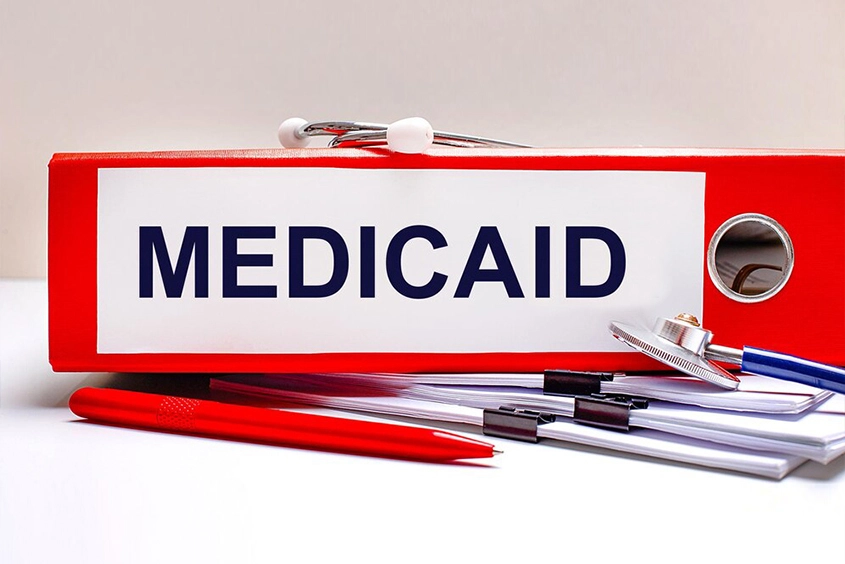The United States Congress has proposed to end Medicaid’s continuous coverage this year. After approval by Congress and President Biden, it will end all coverage protection under Medicaid on March 31, 2023.
But what does this mean to millions of people under the Medicaid program? If the 1.7 trillion omnibus package is approved, more than 15 million Americans will lose their Medicaid coverage, or around 20% of current beneficiaries.
The Pandemic and Medicaid
Medicaid eligibility depends on many economic and social factors. Before March 2020, people were regularly removed from the program as their financial situations changed.
The COVID-19 pandemic prevented states from removing many people under Medicaid. It was deemed vital to maintaining public health and safety at the time. These pandemic-era protections are set to expire in 2023.
Since 2020, the number of people under the Medicaid program has swelled by tens of millions and has grown to 90.6 million. This has created a steep financial burden for the federal government. Those who support the omnibus package cited that its membership can be adjusted to be similar to pre-pandemic numbers.
The package will also gradually remove people who no longer qualify for the Medicaid program. In April, states can once again remove ineligible candidates if they do not fit Medicaid requirements.
According to the U.S. Department of Health and Human Services (HHS), around 15 million Americans are at risk of losing coverage once these protections unwind.
Are People Going to Lose Their Medicaid?
So are you going to lose your Medicaid benefits?
Medicaid is designed to provide health benefits to low-income families, pregnant women, and children. It is a program that is supported by federal and local governments, and the requirements are different for every state.
If you still meet the state requirements for Medicaid, you will not lose any benefits or coverage. Those who receive Supplemental Security Income (SSI) and other vulnerable groups will remain eligible. But if your income has increased in the past two years or your financial situation has improved, you may lose Medicaid privileges after April 1.
Fortunately, this will not be a sudden change. State governments are required to inform Medicaid claimants in advance if they will lose their benefits. States will check and verify the following details to determine eligibility moving forward:
-
Current residence
-
Current income
-
Family situation
-
Current work situation
It’s best to update your Medicaid information to ensure you meet eligibility requirements. Quick verification by the state will make it easier to confirm a person’s eligibility. The HSS estimates 7 million people may lose Medicaid coverage due to a lack of updated contact information to maintain their enrollment.
The U.S. Centers for Medicare and Medicaid Services (CMS) says that their recommendation to state governments is to take a full year to review those in their Medicaid programs. CMS encourages states to closely reconsider and redetermine the eligibility of each person before removing them.
What State Governments Can Offer

CMS has required states to create operational plans for the Medicaid unwinding process. The plans must include a description of how they will value Medicaid renewals and the timeline for completion.
States must also submit reports that provide a summary of their plans. Though these plans will not be available to the public, CMS encourages state leaders to meet with stakeholders and experts that can help them develop these strategies.
So far, 41 states have said they plan to complete the renewals within 12 months, while 28 states say they have created their plans for prioritizing Medicaid renewals. Many of these states say they are eager to update claimants’ contact information and complete follow-ups and evaluations before stopping or continuing coverage.
However, some states, like Ohio, want to speed up the process. Some states that are under serious financial pressure due to inflation and the recession plan to accelerate Medicaid reviews and removals.
The process will affect the eligibility of many receiving the benefit. If they lose Medicaid benefits, they will have to rely on their insurance providers to pay for all health care bills moving forward. Unfortunately, those on Medicaid likely do not have insurance coverage and will be left in the lurch.
Some states are drafting plans to ease the process for such members. They will likely explore other solutions, such as the Affordable Care Act (ACA), private insurance, food stamps, or other programs where people can get the healthcare they need.
How Billing Companies and Healthcare Facilities Will be Affected
Medicaid pays hospitals and other medical and healthcare facilities for the care of all beneficiaries under the program. Though Medicaid is usually rated below the cost of the actual expense, hospital payments are often higher due to supplemental payments under the Disproportionate Share Hospital Payments (DSH).
This means many healthcare facilities often receive Medicaid payments that are in excess of the total cost of service. States have different data sources, systems, and definitions of what is counted as payment and expense. This makes it very difficult to analyze how much in total excess is paid to healthcare facilities.
In 2023, billing companies that use Medicaid billing software will also need to adjust to the unwinding of Medicaid. Companies like BillPro will have to follow up on patients’ contact information to review all patient eligibility requirements and determine their state eligibility before April 1st.
Streamlining the Renewal Process Can Promote Coverage Continuity
Under the ACA, states must complete the renewals by verifying a person’s eligibility through various data sources. They must do this before sending a renewal form or requesting more documentation from a claimant.
However, not all states do this. In fact, only 11 states report a 50% Medicaid renewal rating. If this continues, it might take longer than a year to complete renewals and maintain coverage for those who are eligible.
However, there are now other ways to complete the process. CMS explained that states can increase renewals by expanding the data sources to verify eligibility. These updates can be facilitated through online resources, phone calls, and physical mail.
A new rule proposes to streamline the process of renewal for all states so they can lower the number of Medicaid claimants to pre-pandemic levels. This process will ensure that the same limitations and standards for eligibility and renewal requirements will be the same for every state.
Changes to Medicaid Coverage in 2023 Will Still Affect Those at Risk

Though the omnibus package does promise to control state and federal spending, millions of people will be affected by the unwinding of Medicaid. And many of them will be removed from the program even if they are still eligible.
Those who moved to another state in the past two years may face new, unfamiliar requirements. New immigrants, the elderly, and those with disabilities may have difficulty updating their contact information.
This has increased concern for underprivileged groups who may not have access to resources to ensure that they remain eligible for Medicaid benefits after April 1st. CMS has encouraged states and healthcare centers to conduct outreach programs to mitigate oversight.
These programs are meant to help those in marginalized groups to receive information regarding their Medicaid eligibility. Grassroots organizations can take point and help enrollees before the deadline. Doing so ensures that these underserved populations will still have the healthcare coverage they need, or they can explore other options.
The unwinding will also affect the number of people with private health insurance. Fortunately, many enrollees who are no longer eligible for Medicaid may still be covered under the ACA.
A recent study found that many people found it difficult to transition to other health programs even though they were eligible. CMS aims to simplify the process by enabling the electronic transfer of enrollee information and accepting similar eligibility guidelines.
Medicaid is Changing: Are You Ready?
Medicaid is shifting drastically in 2023, and it will have a widespread impact on the healthcare industry. It will affect hospitals, clinics, healthcare facilities, and third-party service providers.
These changes will also shift the way hospitals bill patients. Insurance providers may also adjust their policies and scope of coverage.
Most of all, it will affect how people pay for medical and health care needs. It can be a daunting challenge for the millions who rely on Medicaid to cover their medical bills.
It will take time for some people and companies to adjust. But if they have the right medical billing partners, the transition will be quite smooth. Patients and partner facilities can easily explore new coverage and programs that will suit their needs.
Billing companies like BillPro can help hospitals and medical centers assist their patients. They can suggest potential alternatives for payment and help them adjust to the new guidelines. They will ensure that all billing remains accurate and timely.
BillPro’s Medicaid billing features simplify claim management and ensure a high number of clean claims. Book a demo today!

 2.9/5 (20 votes)
2.9/5 (20 votes)
 170 views
170 views



